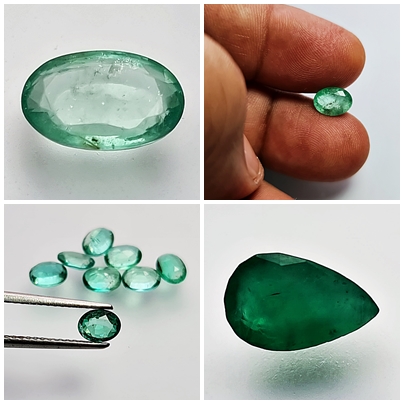Russian Emerald: Gemstone Information
Russian emeralds, renowned for their exceptional quality and captivating beauty, have a storied history dating back centuries. These emeralds are prized for their rich green color, transparency, and often remarkable clarity. The discovery and mining of emeralds in Russia have played a significant role in the gemstone industry, contributing to the country’s reputation as a notable source of high-quality gemstones. Here is a comprehensive exploration of Russian emeralds, including their history, characteristics, mining, and significance in the gemstone world:
History and Origins:
Russian emeralds have been mined for centuries in the Ural Mountains, a region known for its rich mineral deposits. The Ural Mountains, stretching across Russia and Kazakhstan, have long been associated with various gemstones and minerals, including emeralds. The first documented discovery of emeralds in the Urals dates back to the early 19th century, although historical accounts suggest that emeralds may have been known and mined in the region even earlier.
Characteristics of Russian Emeralds:
Russian emeralds are prized for their distinctive color, clarity, and transparency. They typically exhibit a vivid green hue with a rich saturation and often display excellent transparency, allowing light to pass through the gemstone with minimal obstruction. The color of Russian emeralds is influenced by trace elements such as chromium and vanadium, which impart the characteristic green coloration. In terms of clarity, Russian emeralds are known for their relatively low incidence of inclusions, making them highly desirable for jewelry purposes.
Mining and Production:
The primary mining area for Russian emeralds is the Malyshevskoye deposit in the Sverdlovsk region of the Ural Mountains. This deposit, discovered in the late 19th century, has been a significant source of high-quality emeralds for over a century. Mining operations in the Malyshevskoye deposit are conducted underground, with miners extracting emerald-bearing rock from deep within the earth. The extracted ore is then processed to extract the emeralds, which are sorted, cut, and polished for use in jewelry.
Significance and Value:
Russian emeralds hold significant cultural and historical value, representing a part of Russia’s rich mineral heritage. They are highly regarded in the gemstone world for their exceptional quality and beauty. Russian emeralds are sought after by collectors, jewelry enthusiasts, and connoisseurs alike, with top-quality specimens commanding premium prices in the market. Their rarity, combined with their remarkable color and clarity, contributes to their enduring popularity and value.
Uses and Applications:
Russian emeralds are predominantly used in jewelry, where they are featured in a variety of designs, including rings, earrings, necklaces, bracelets, and brooches. Their vibrant green color adds a touch of elegance and sophistication to any piece of jewelry, making them a popular choice for both classic and contemporary designs. Russian emeralds are often set in precious metals such as gold or platinum to enhance their beauty and durability.
Cultural and Symbolic Significance:
In addition to their aesthetic appeal, emeralds have long held symbolic significance in various cultures around the world. They are often associated with themes of love, prosperity, and renewal, making them popular choices for engagement rings and other meaningful jewelry pieces. In Russian culture, emeralds are prized for their connection to nature and the lush green landscapes of the Ural Mountains, symbolizing vitality, growth, and harmony with the natural world.
Conclusion:
Russian emeralds stand out as some of the most exquisite and sought-after gemstones in the world. With their rich green color, exceptional clarity, and historical significance, they represent a testament to Russia’s rich mineral wealth and cultural heritage. Whether admired for their beauty, collected as precious gemstones, or worn as symbols of love and prosperity, Russian emeralds continue to captivate and inspire people around the globe.





